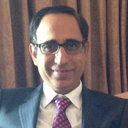Calvarial remodelling surgery: Neurosurgical experience of multidisciplinary craniofacial reconstruction.
Keywords
Abstract
To evaluate the safety, cosmetic and functional outcome of craniofacial reconstruction surgery for primary craniosynostosis and clefts.
This quasi-experimental study was conducted at the Combined Military Hospital, Rawalpindi, Pakistan, from June 2011 to December 2014, and comprised paediatric patients undergoing calvarial reconstructive procedures. Fronto-orbital advancement and reconstruction, total calvarial remodelling and box flap reconstruction techniques were used. Parameters recorded were anomaly, procedure, hospital and intensive care unit stay, theatre time, blood transfusion, dural tears, mortality, wound infection, haematoma/seroma, dehiscence, seizures and cosmetic acceptance. Data was analysed using SPSS 17.
Of the 45 patients, 24(53.3%) were boys and 21(46.7%) were girls with an overall mean age of 14.1±21.95 months. Besides, 36(80%) patients were operated for craniosynostosis and 9(20%) for tessier clefts. Surgical techniques of Fronto-orbital advancement and reconstruction, total calvarial remodelling and box flap were used on 18(40%), 18(40%) and 9(20%) patients, respectively. The mean theatre time was 315.33±74.67 minutes (range: 240-390minutes). The mean blood transfusion was 313.34±135.84ml (range: 200-600ml). Major wound infection was seen in 1(2.2%) patient and minor wound infection occurred in 6(13.3%) cases. Post-operative seizures were seen in 1(2.2%). Improved appearance and stable head growth were seen in 41(91.1%) patients. Only 1(2.2%) patient did not survive the procedure.
Early detection of craniosynostosis, neurological assessment, radiological evaluation, differentiating between primary and secondary craniosynostosis and multidisciplinary treatment of craniofacial reconstruction led to optimal treatment.



